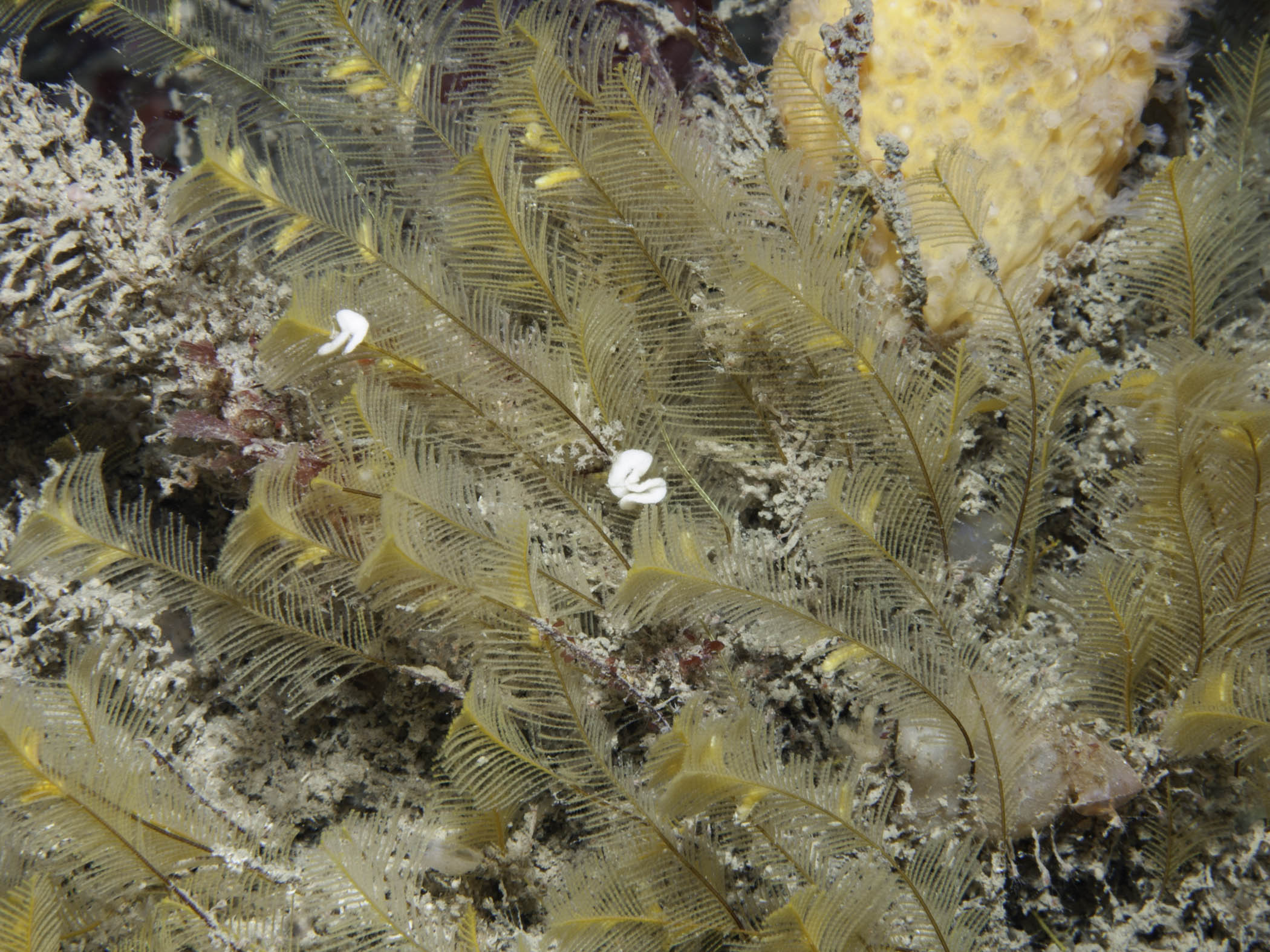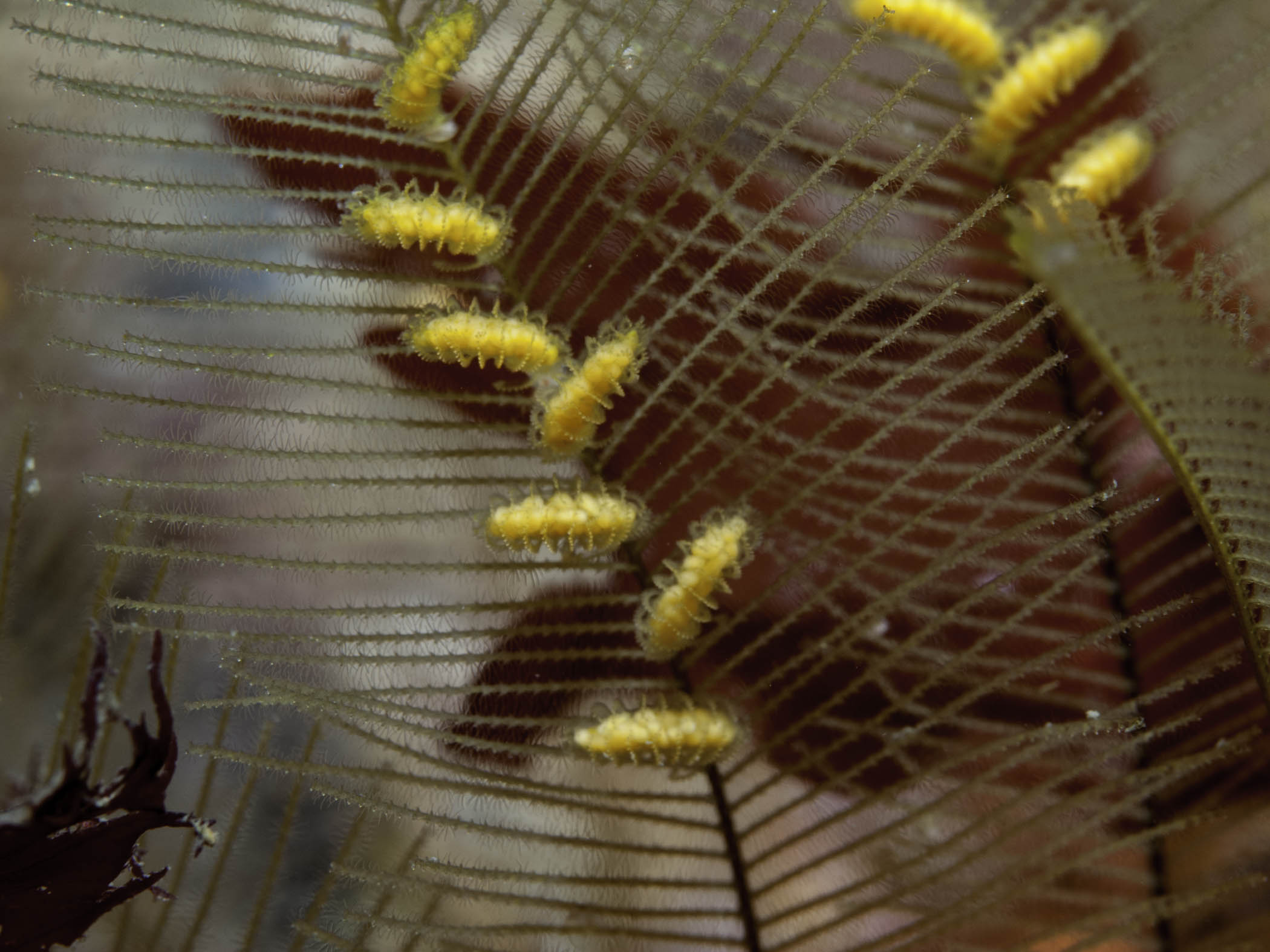| CNIDARIA : Leptothecata : Aglaopheniidae | SEA ANEMONES AND HYDROIDS |
Aglaophenia tubulifera (Hincks, 1861)
 |
| Aglaophenia tubulifera |
Description: The main stems of this species bear side branches in alternating series on opposite sides giving a feather-like colony. The colour of living specimens is a delicate light yellow-brown. The feeding polyps are borne in a single series along the side branches, each surrounded by three defensive polyps. In all Aglaophenia species a few side branches are modified as reproductive structures called corbulae. Each upright stem of this species may bear from 3 to 7 of these corbulae when fertile. A specific feature is the basal leaf of the corbula which projects downwards in this species, rather than being curled round like the rest. Typically 5-7 cm in height by about 1 cm across the colony.
Habitat: This is the commonest Aglaophenia species in water deeper than 10 metres, where it forms clumps on rocks and wrecks in moderate tidal streams and moderate levels of wave exposure.
Ecology: A small nudibranch Doto lemchei feeds exclusively on this hydroid. It lives near the base of the colony but lays a short coil of eggs attached to the main stem.
Distribution: A common species all round Britain and Ireland on hard substrata.
Similar Species: The other species of Aglaophenia are all similar. Gymnangium montagui is more robust and does not have corbulae.
Key Identification Features:
- Light yellow-brown feathers in clusters
- Corbulae with wing-like free branch at base
Distribution Map from NBN: Aglaophenia tubulifera at National Biodiversity Network mapping facility, data for UK.
iNaturalist: Aglaophenia tubulifera at iNaturalist World Species Observations database.
GBIF data for Aglaophenia tubulifera
WoRMS: Aglaophenia tubulifera at World Register of Marine Species. Accepted name: Aglaophenia tubulifera (Hincks, 1861). AphiaID: 117285.
Classification: Biota; Animalia; Cnidaria; Medusozoa; Hydrozoa; Hydroidolina; Leptothecata; Plumularioidea; Aglaopheniidae; Aglaophenia
| Previous species | Next species |
| Picton, B.E. & Morrow, C.C. (2024). Aglaophenia tubulifera. (Hincks, 1861). [In] Encyclopedia of Marine Life of Britain and Ireland. https://www2.habitas.org.uk/marbiop-ni/speciesaccounts.php?item=D5560. Accessed on 2025-04-04 |

